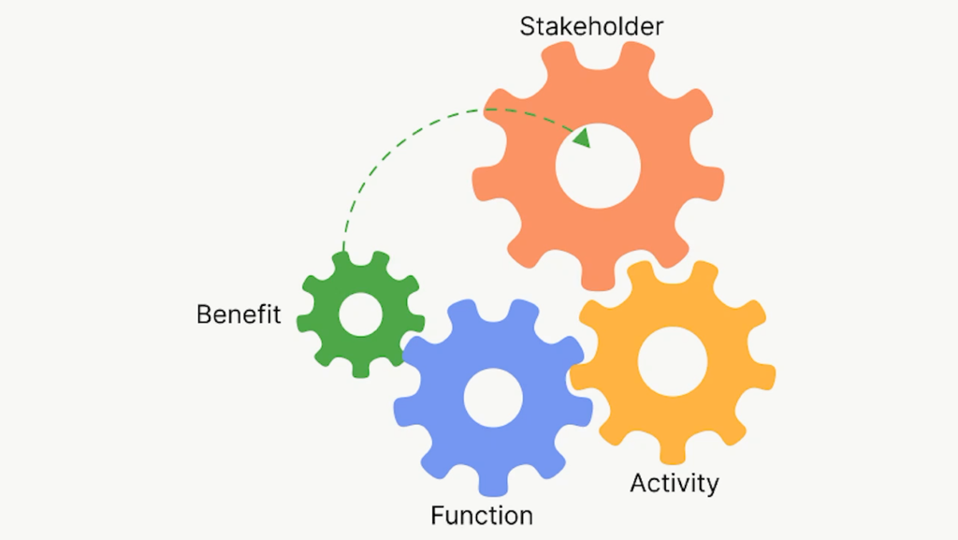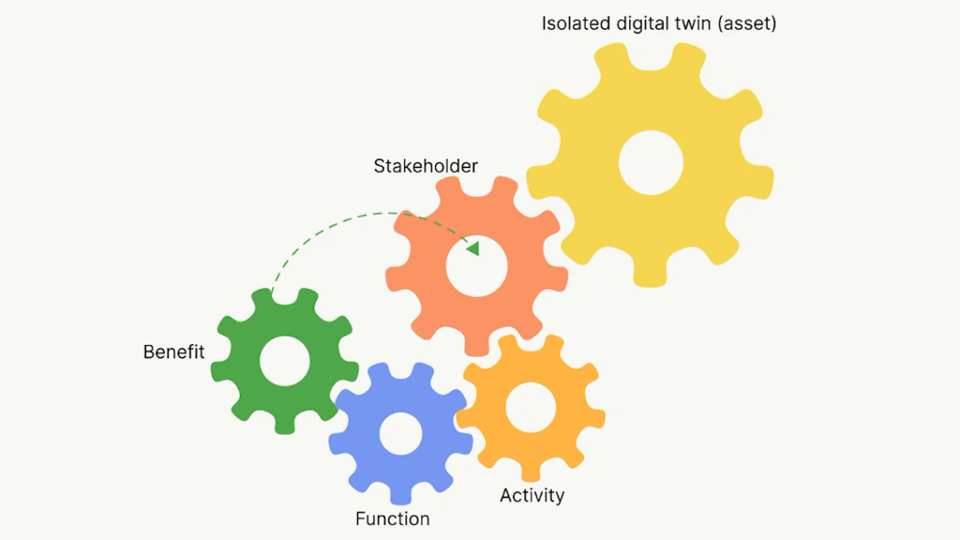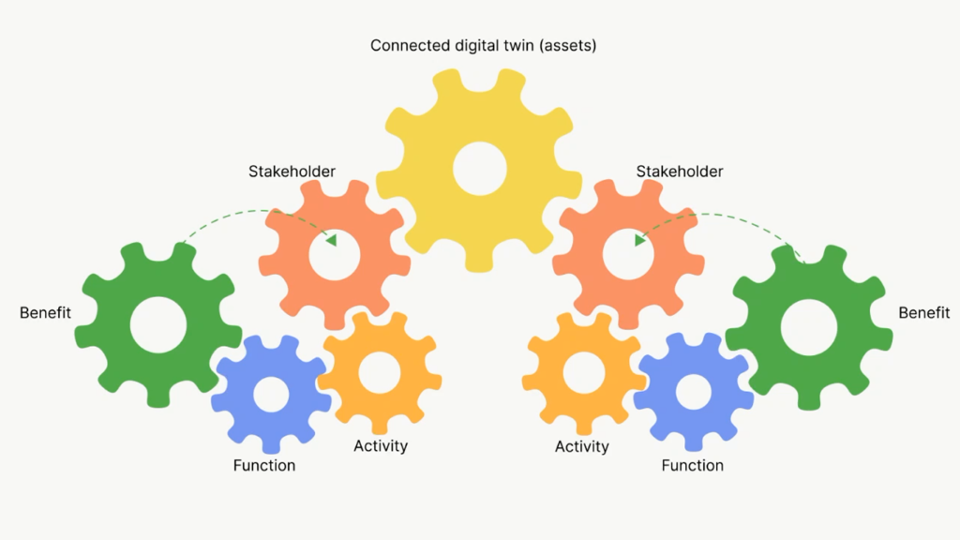
Submitted by Angela Walters on Wed, 07/10/2020 - 09:06
There is a difference between a nation of digital twins and a National Digital Twin
Isolated digital twins exist as a replica of an asset with a symbiotic relationship to the real thing. Enterprises are constructing these isolated twins and creating value from increased efficiencies, higher customer satisfaction and safer colleagues. We at the NDTp believe that there are network effects from connecting these isolated twins which offer benefits to society, the economy, business and the environment. Eventually connected twins could form a national digital twin, but we need to answer the question 'how much better are connected twins and who for?' in order to design the connective tissue.
A Logic Model to quantify the sharing of benefits
CDBB has developed a framework, an organized and systematic way of approaching the vast question of the nature and extent of the national digital twin’s potential from the perspective of participating stakeholders. The model is represented in three steps.
- In the absence of a digital twin, a stakeholder completes an activity in order to deliver a function from which that stakeholder derives benefit. For example, a council (the stakeholder) discharges the function of maintaining a road surface in order to deliver the statutory function of moving goods and people around the local area.
Additionally, the cog mechanism describes a broadband provider in their operational activity on the same road of delivering digital connectivity to their customers.
- Stakeholders are working with their own, isolated, digital twins. So the local authority is able to schedule the maintenance at a time of year when there is least disruption to the local population which access services by using the road. Similarly, the broadband supplier is able to train their staff in a simulated environment in order to increase their operational efficiency.
- Finally, the two bodies connect their digital twins in order to deliver both enhanced benefits for themselves but also additional stakeholders.
The council and the contractor can collaborate and reach agreement on a range of trade offs concerning the timing and nature of the maintenance and installation operations. The road is maintained in a way which maximizes both the movement of goods and people but also connectivity for the local population. In addition, other subsurface work may be carried out at the same time and local residents benefit from more predictable and even less carbon intensive interventions.
Scaling up
The basic cog model, scaled up at industry or national scale can give us insight in to the influence of different stakeholders. An asset has relevance and importance not just for the asset owners but also for those that supply energy to it and guard against its damage through flood. Teasing out and articulating all these relationships enable us to create a conceptual model of how these connections work, the benefits from making them and the barriers to achieving the benefits.
Webinar
To find out more about the benefits of a National Digital Twin join Miranda Sharpe at our upcoming Webinar on 20 October. REGISTER
Webinar now available to watch:
Miranda Sharp is the Lead for the Commons Streams of the National Digital Twin Programme. She also holds positions as a member of the Mayor’s Smart London Board and Infrastructure Advisory Panel, trustee at the Centre for Cities think tank, steering group for the Infrastructure Client Group’s Digital Transformation Task Group, and advisor to the award winning SME See Sense. Her interest is in making both new and existing assets smarter with the benefits of data and innovative business models



